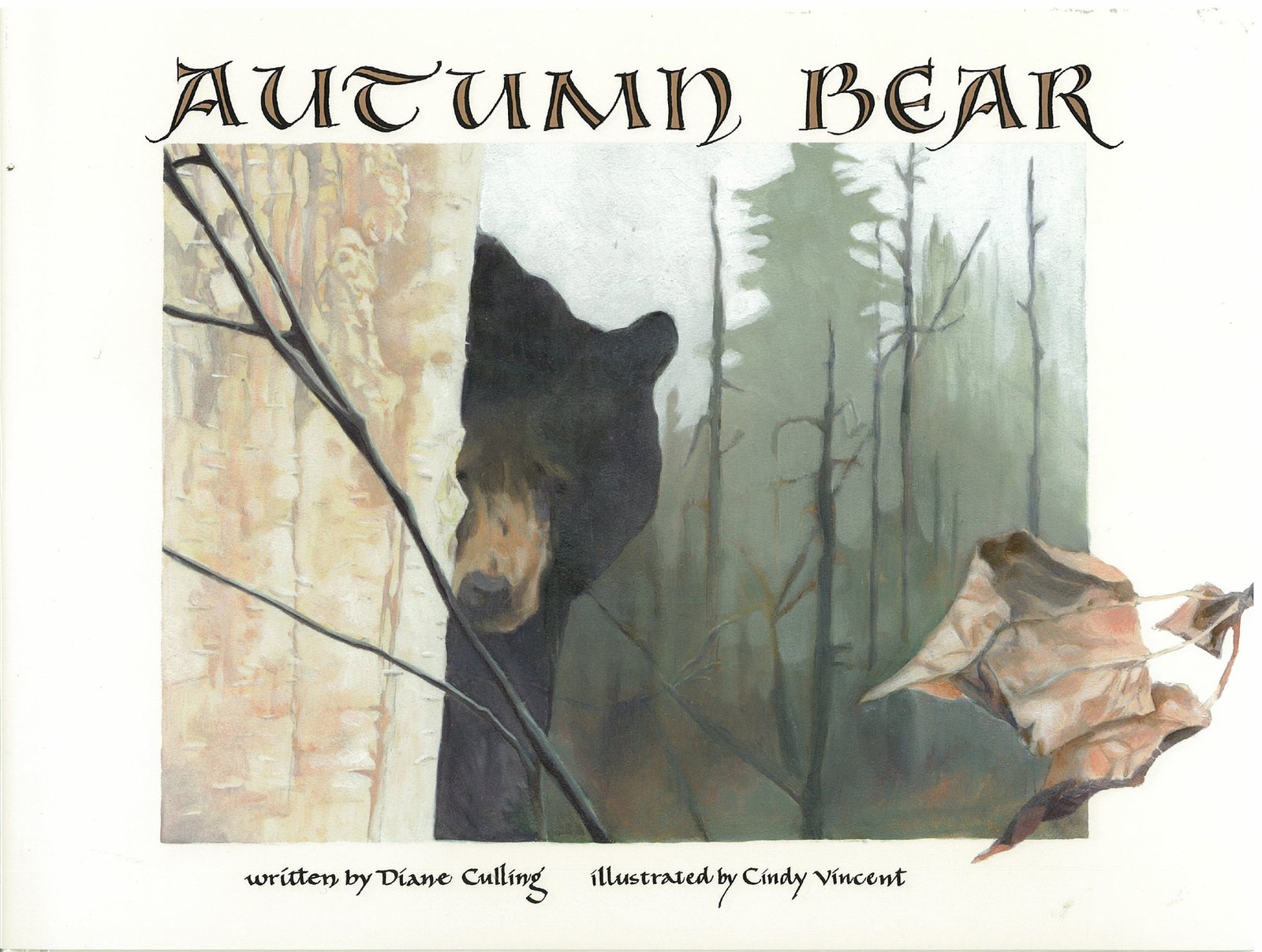A black bear on a quest for food, in preparation for hibernation. I know the feeling. I realize we evolved from apes, but sometimes I think my genetic lineage has more in common with Ursa Major than Simianus Nofatus. I’ve never swung from trees, nor do I have any aspirations to do so, but I know all about the irresistable drive to fatten up for the winter, which invariably leads to very long naps in my cozy den. And, I like honey. Clearly it’s genetic memory, not lack of willpower.
Darwin was almost right.
As much as anthropomorphism informs and guides my life, there’s something palette cleansing about a book that celebrates an unembellished nature. The bear is simply a bear. The curled aspen leaves and hoar-frosted berries, the deep blue skies, the pine trees poking through an early snow, the bugling elk and swooping ravens; these are the familiar accoutrements of a northern Canadian forest in autumn. In this sense, Autumn Bear is like a sketchbook, capturing both visually and textually a bear’s habitual preparation for winter, and indeed, the entire progression of the autumnal season in the foothills of the Peace River country, British Columbia. Beautifully observed, but simple, without a lot of fuss.
 After a month or two of foraging, the bear’s belly is full. He has found his winter home:
After a month or two of foraging, the bear’s belly is full. He has found his winter home:
Then Autumn Bear crept to his den in the ground
so dry and so dark
and so muffled from sound…
and he slowly
slipped
off to sleep.
Just let me finish this bag of double-stuff oreos, and I’ll be right there. Don’t hog the sheets.
I’m not usually a fan of translucent watercolour paintings. They seem hesitant, as if the artist is uncommitted to the subject matter. However, the watercolours by British Columbia-based artist Cindy Vincent in Autumn Bear are lovely in their subdued, almost meditative depictions of a forest in decline.
If I have one minor quibble with Autumn Bear (the book, not the bear), it’s that I’m not convinced calligraphy was the best choice for the text. It’s perfect for the cover, but inside, the heavily stylized print is difficult to read. It reminds me of books you might find under Inspiration in a bookstore. The decorative lettering is fine for short, pithy quotes about footprints and graduation, but it’s a visual impediment for longer stories.
As a wildlife biologist and writer, Diane Culling is not only familiar with the hills and forests of northern British Columbia, she possesses an ‘abiding affection for the flora and fauna of the Canadian hinterlands.’ Long-time friends, Vincent and Culling are collaborating on another book about northern resident winter birds. Hopefully the publication will be delayed until spring or summer. I’m off for a long winter’s nap. With a bear.
Autumn Bear was long-listed for the 2007 Canadian Librarians Association Amelia Frances Howard Gibbon Award, presented to an outstanding illustrator of a children’s book published in Canada.
Autumn Bear is written by Diane Culling, with illustrations by Cindy Vincent. Published by Snowberry Books, 2007



